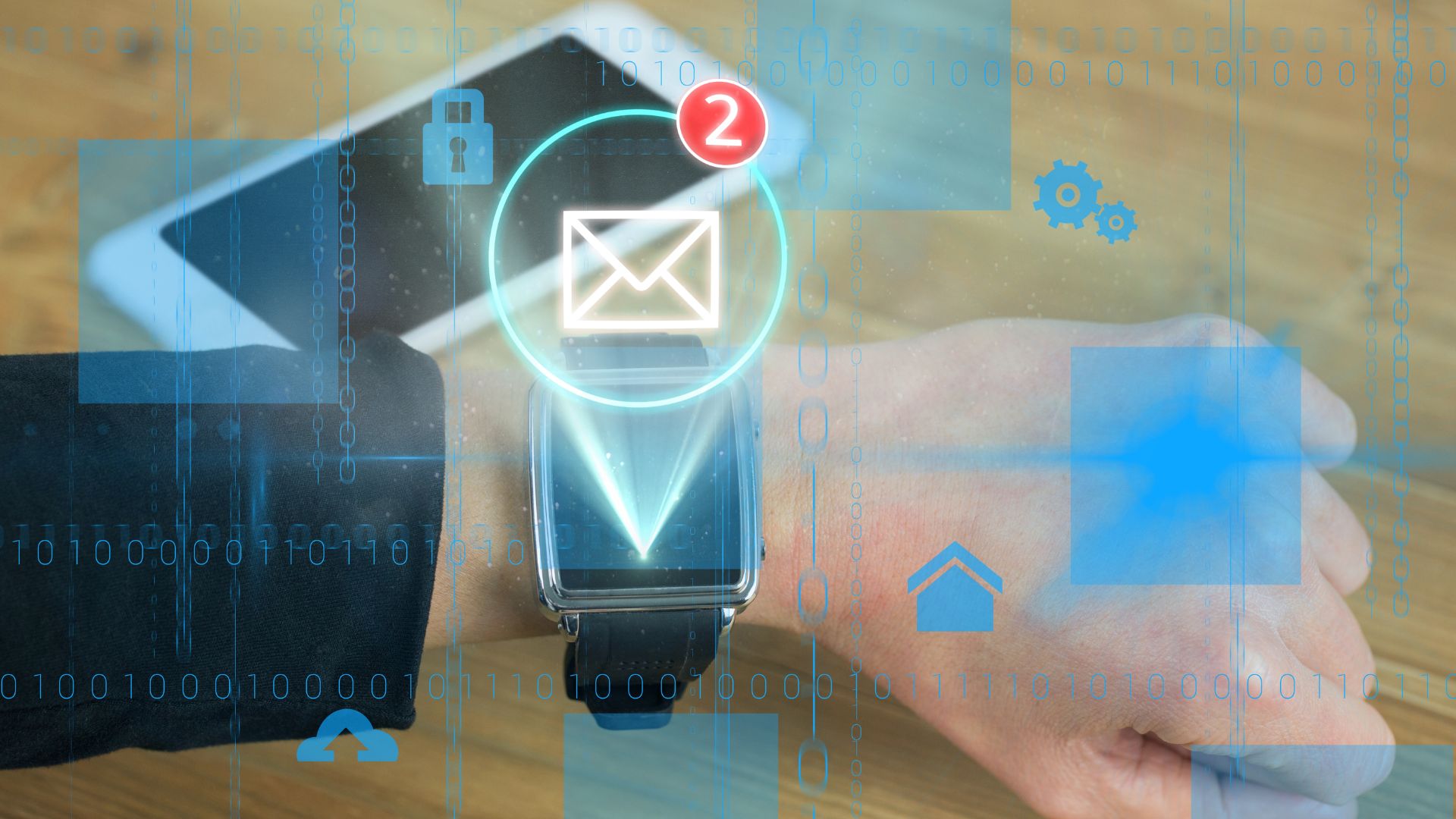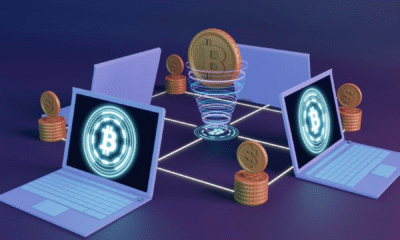TECH
DemainMail: The Future of Secure and Private Email Communication

In an era where digital privacy and security are paramount, email remains one of the most vulnerable communication channels. Data breaches, phishing attacks, and government surveillance have made traditional email services risky for both individuals and businesses. Enter DemainMail—a next-generation email service designed to provide unparalleled security, privacy, and user control.
This comprehensive guide explores DemainMail, its features, benefits, and why it stands out in the crowded email service market. Whether you’re a privacy-conscious individual, a journalist, or a business handling sensitive data, understanding DemainMail could be the key to safeguarding your digital communications.
What is DemainMail?
DemainMail is a secure, encrypted email service that prioritizes user privacy and data protection. Unlike mainstream providers like Gmail or Outlook, DemainMail is built with end-to-end encryption (E2EE), zero-access architecture, and decentralized storage to ensure that only the intended recipient can read the messages.
Key Features of DemainMail
-
End-to-End Encryption (E2EE)
-
All emails are encrypted before they leave the sender’s device and can only be decrypted by the recipient.
-
Even DemainMail’s servers cannot access the content of emails.
-
-
Zero-Access Architecture
-
The service provider has no ability to read, scan, or store email content in an unencrypted form.
-
This prevents third-party surveillance and data mining.
-
-
Self-Destructing Emails
-
Users can set expiration times for emails, after which they are permanently deleted.
-
Ideal for sending sensitive information that shouldn’t remain stored indefinitely.
-
-
No IP Logging
-
DemainMail does not track or store users’ IP addresses, ensuring anonymity.
-
-
Open-Source & Audited
-
The code is publicly available for security experts to audit, ensuring transparency.
-
Regular third-party security audits verify its integrity.
-
-
Decentralized Storage (Optional)
-
Some versions of DemainMail use decentralized servers to prevent single points of failure.
-
Reduces the risk of government or corporate interference.
-
-
Alias & Disposable Emails
-
Users can create temporary email addresses to avoid spam and phishing.
-
-
Cross-Platform Compatibility
-
Works on desktop, mobile (iOS/Android), and via web browsers.
-
Why DemainMail is Necessary in Today’s Digital Landscape
1. Rising Cyber Threats & Email Vulnerabilities
-
Phishing Attacks: Over 36% of all data breaches involve phishing, with email being the primary vector (Verizon 2023 Report).
-
Data Breaches: Major email providers have suffered breaches, exposing millions of users’ data.
-
Government Surveillance: Agencies like the NSA and others have been known to monitor emails under mass surveillance programs.
DemainMail’s encryption ensures that even if a breach occurs, intercepted emails remain unreadable.
2. Corporate Espionage & Business Security
Businesses handling intellectual property, legal documents, or financial data need secure email solutions. DemainMail offers:
-
Encrypted attachments
-
Secure team collaboration features
-
Compliance with GDPR and other privacy laws
3. Journalists & Whistleblowers
For individuals leaking sensitive information (like whistleblowers or investigative journalists), DemainMail provides:
-
Anonymous sign-up (no personal data required)
-
Secure drop features for confidential tips
4. Privacy-Conscious Individuals
Even everyday users are at risk of:
-
Ad tracking (Gmail scans emails for ad targeting)
-
Data profiling (Email metadata sold to advertisers)
DemainMail eliminates these privacy invasions.
DemainMail vs. Other Secure Email Providers
| Feature | DemainMail | ProtonMail | Tutanota | Mailfence |
|---|---|---|---|---|
| End-to-End Encryption | ✅ Yes | ✅ Yes | ✅ Yes | ✅ Yes |
| Zero-Access Servers | ✅ Yes | ✅ Yes | ✅ Yes | ❌ No |
| Self-Destructing Emails | ✅ Yes | ❌ No | ✅ Yes | ❌ No |
| Open-Source | ✅ Yes | ✅ Yes | ✅ Yes | ✅ Yes |
| Decentralized Option | ✅ Yes | ❌ No | ❌ No | ❌ No |
| Anonymous Sign-Up | ✅ Yes | ❌ (Requires SMS in some cases) | ✅ Yes | ❌ No |
| Free Tier Available | ✅ Yes | ✅ Yes | ✅ Yes | ✅ Yes |
Why DemainMail Stands Out:
-
More anonymity options than ProtonMail.
-
Self-destructing emails (unlike ProtonMail).
-
Decentralized storage (a unique feature among secure email providers).
How to Get Started with DemainMail
Step 1: Sign Up
-
Visit DemainMail’s official website.
-
No personal information required—just a username and password.
Step 2: Set Up Encryption Keys
-
DemainMail generates a public-private key pair.
-
The private key stays on your device (never shared with servers).
Step 3: Customize Security Settings
-
Enable two-factor authentication (2FA).
-
Set up expiration timers for sensitive emails.
Step 4: Start Sending Secure Emails
-
Compose emails as usual—encryption happens automatically.
-
For extra security, use password-protected emails (recipient needs a separate passphrase to open).
Potential Drawbacks of DemainMail
-
Slower Adoption by Mainstream Users
-
Unlike Gmail, DemainMail requires a slight learning curve for encryption management.
-
-
Limited Third-Party Integrations
-
Some business tools (like CRM plugins) may not yet support DemainMail.
-
-
Decentralized Servers May Reduce Speed
-
Depending on server locations, email delivery might be slower than centralized providers.
-
The Future of DemainMail
DemainMail is continuously evolving with upcoming features:
-
Blockchain-Based Email Verification (to combat spoofing).
-
Quantum-Resistant Encryption (preparing for future cyber threats).
-
Enhanced Business Solutions (enterprise-level security plans).
As digital privacy laws tighten (like the EU’s Digital Services Act), DemainMail is poised to become a leader in secure communication.
Conclusion: Is DemainMail Right for You?
If you value privacy, security, and control over your digital communications, DemainMail is an excellent choice. It outperforms many competitors with its self-destructing emails, decentralized options, and strict no-logging policy.
Best For:
✔ Privacy-conscious individuals
✔ Journalists & whistleblowers
✔ Businesses handling sensitive data
✔ Activists & political dissidents
While it may not yet have the convenience of Gmail, the trade-off for unmatched security is worth it for those who need it.
Final Verdict: DemainMail is not just another email service—it’s the future of private communication.
TECH
Tex9.net Green IT: Revolutionizing Sustainable Technology in 2025

In an era increasingly dominated by climate change, carbon emissions, and the urgent need for sustainable solutions, Green IT (Green Information Technology) has emerged as a critical area of innovation. Among the trailblazers in this domain is Tex9.net, a digital platform that has seamlessly integrated environmentally friendly practices into the tech landscape. Whether you’re an IT professional, a green tech enthusiast, or an organization looking to align with sustainable practices, Tex9.net Green IT provides a forward-thinking ecosystem worth exploring.
This comprehensive guide delves into everything you need to know about Tex9.net Green IT—from its origins and core initiatives to its technologies, strategies, and global impact.
Introduction to Green IT
In today’s digital age, where technology powers nearly every aspect of modern life, the environmental impact of information technology (IT) is gaining increasing attention.
This includes the design, manufacture, use, and disposal of computers, servers, and associated systems in ways that reduce energy consumption, minimize carbon footprints, and promote ecological balance.
What is Tex9.net?
Tex9.net is a web-based platform that has gained attention for offering various digital tools, services, or content—though its exact purpose can vary depending on how it is used or promoted at a given time. Some users report it being linked to technology-related utilities, while others associate it with online entertainment or content sharing. Because Tex9.net has appeared in different contexts, it’s important to approach it with caution, especially if encountered unexpectedly through advertisements or unsolicited links. As with any lesser-known website, users are advised to verify its legitimacy before sharing personal information or downloading anything from it
The Origin of Tex9.net Green IT
Founded by a group of sustainability-focused engineers and developers, Tex9.net was built on the idea that technology can be both innovative and eco-friendly. The Green IT initiative under Tex9.net officially launched in 2021, with a strong emphasis on:
Reducing carbon emissions in server infrastructure
Using renewable energy sources
Educating the tech community on sustainable practices
Since then, Tex9.net Green IT has become a benchmark in the tech industry.
Core Values and Vision
The platform’s mission is clear: to make Green IT the norm rather than the exception. Tex9.net’s values include:
Sustainability: Making eco-conscious decisions in all facets of operation
Transparency: Publicly sharing environmental metrics
Innovation: Driving new technology for cleaner computing
Accessibility: Offering tools and knowledge to users of all levels
Tex9.net’s Green IT Ecosystem
Tex9.net Green IT is not a single product or service—it’s an entire ecosystem of tools, services, and practices. Key components include:
Green Hosting
Carbon-Neutral Cloud Computing
E-Waste Management Programs
Energy-Efficient Algorithms
Smart Grid Integrations
These elements are interconnected, forming a holistic approach to sustainability.
Technologies Powering Tex9.net Green IT
Tex9.net leverages cutting-edge technologies to ensure environmental efficiency:
a. Virtualization and Containerization
Using platforms like Docker and Kubernetes, Tex9.net maximizes hardware usage, significantly reducing energy demands.
b. Renewable-Powered Servers
All Tex9.net servers are powered by renewable sources like solar, wind, and hydro, eliminating reliance on fossil fuels.
c. Blockchain for Traceability
Tex9.net uses blockchain tech to track energy usage and carbon offset transactions, promoting transparency and accountability.
7. Sustainable Data Centers
Traditional data centers are energy hogs. Tex9.net has reengineered its data centers with:
Liquid Cooling Systems: 40% more efficient than traditional cooling
Server Consolidation: Reduces the physical footprint of hardware
These changes have reduced power usage effectiveness (PUE) to a record 1.1.
Cloud Computing and Energy Optimization
Cloud computing is the backbone of Tex9.net’s offerings. Unlike conventional cloud services, Tex9.net’s platform includes:
Smart Load Balancing to optimize resource allocation
Green Storage Solutions with SSDs and cold storage options
Serverless Architectures that consume resources only when needed
The result? Up to 60% lower carbon emissions per user compared to legacy systems.
AI-Powered Efficiency Systems
Tex9.net integrates Artificial Intelligence into its ecosystem for:
Predictive maintenance of hardware
Dynamic power allocation
Real-time carbon footprint monitoring
These systems not only reduce energy usage but also improve performance.
Tex9.net’s Contribution to the Circular Economy
Tex9.net is a firm advocate of the Circular Economy, minimizing waste and maximizing product lifecycle. Their strategies include:
Hardware Recycling Programs
Upcycling Old Components into educational kits
Partnerships with Electronics Manufacturers to reuse rare materials
This reduces landfill waste and supports sustainable sourcing.
Tex9.net for Enterprises
Businesses looking to adopt sustainable practices find Tex9.net a valuable partner. The platform offers:
Custom Cloud Deployment: Sustainable infrastructure tailored to business needs
Certifications: Helping businesses earn green credentials like LEED and ISO 14001
By 2025, over 3,000 companies globally have partnered with Tex9.net to achieve greener operations.
Education and Community Outreach
Tex9.net doesn’t stop at enterprise solutions—it invests in people. Key initiatives include:
Green IT Certification Programs
Open Source Sustainability Toolkits
Community Hackathons focused on environmental innovation
Educational Webinars and live workshops
Their goal is to create an informed generation of Green IT professionals.
Environmental Impact Metrics
Tex9.net regularly publishes an Environmental Impact Report. As of 2025:
1.2 million kWh of electricity saved annually
5,000 tons of CO₂ emissions avoided
90% of their e-waste responsibly recycled or reused
65% reduction in energy costs for client businesses using their cloud platform
These numbers highlight Tex9.net’s measurable impact on the environment.
Green IT and Compliance with Global Standards
Tex9.net Green IT initiatives align with:
United Nations Sustainable Development Goals (SDGs)
Paris Climate Agreement objectives
EU Green Deal
Green Electronics Council Standards
Their compliance ensures trust and global relevance.
Future Roadmap of Tex9.net Green IT
Looking forward, Tex9.net plans to:
Launch a Decentralized Green Cloud powered by user-shared renewable nodes
Expand to developing countries with solar-powered mini data hubs
Integrate quantum computing for energy-efficient computation
Develop carbon credit marketplaces tied to IT usage
These innovations signal Tex9.net’s long-term commitment to sustainability.
Final Thoughts
Tex9.net Green IT is more than just a buzzword—it’s a full-fledged movement redefining how we view technology’s role in the environment. By merging cutting-edge tech with sustainable strategies, Tex9.net offers a blueprint for a greener digital future.
Whether you’re a business leader, developer, or eco-conscious consumer, engaging with Tex9.net Green IT means contributing to a world where innovation and responsibility go hand in hand. In a digital era driven by speed and scale, Tex9.net reminds us that true progress is green.
FAQs About Tex9.net Green IT
Q1: Is Tex9.net Green IT suitable for small businesses?
Yes. Tex9.net offers scalable green cloud solutions for startups and SMEs at competitive prices.
Q2: How do I measure the carbon footprint of my IT infrastructure using Tex9.net?
Their platform provides real-time monitoring and monthly impact reports.
Q3: Can individuals contribute to Tex9.net’s Green IT mission?
Absolutely! Developers can contribute to open-source green tools, join community events, or use the platform’s green hosting services.
Q4: Is Tex9.net certified as a green company?
Yes. It is certified under ISO 14001, Energy Star, and Green-e Energy programs.
Q5: What makes Tex9.net different from other green tech companies?
Tex9.net uniquely combines cloud infrastructure, blockchain, education, and hardware innovation—all under one sustainable vision.
TECH
The Fascinating World of 7×6: Exploring Its Meaning, Applications, and Significance

At first glance, 7×6 appears to be a simple multiplication problem with a straightforward answer: 42. However, this seemingly basic equation holds deeper significance across mathematics, science, culture, and even philosophy. In this comprehensive exploration, we will delve into the various dimensions of 7×6, uncovering its relevance in different fields, its historical context, and why it continues to be a point of interest for many.
1. The Mathematical Perspective: Breaking Down 7×6
1.1 Basic Arithmetic
This calculation is part of the 7 times table, which is essential for building a strong foundation in arithmetic.
7 × 1 = 7
7 × 2 = 14
7 × 3 = 21
7 × 4 = 28
7 × 5 = 35
7 × 6 = 42
… and so on.
Memorizing these tables helps in quick mental calculations, which are crucial in everyday life, from budgeting to problem-solving.
1.2 Prime Factorization and Number Theory
Prime Factorization: 2 × 3 × 7
A Harshad Number: 42 is divisible by the sum of its digits (4 + 2 = 6, and 42 ÷ 6 = 7).
These properties make 42 a subject of study in advanced mathematics, particularly in algebra and combinatorics.
2. 7×6 in Science and Technology
2.1 Computing and Binary Representations
In computing, numbers like 42 (from 7×6) have unique representations:
Binary: 101010
Hexadecimal: 2A
ASCII Code: 42 represents the asterisk symbol (*).
The binary pattern 101010 is aesthetically pleasing and often used in programming examples.
2.1The Answer to Life, the Universe, and Everything
This has led to 42 becoming a pop culture phenomenon.
Mathematicians and philosophers have debated whether there’s a hidden meaning behind Adams’ choice.
Some speculate that 7×6 = 42 was chosen because of its simplicity yet intriguing properties.
3. 7×6 in Real-World Applications
3.1 Timekeeping and Calendars
A week has 7 days, and if we consider 6 weeks, we get 42 days.
Some work schedules or fitness challenges are structured around 6-week (42-day) cycles.
3.2 Sports and Games
In dominoes, a standard double-six set has 28 tiles, but variations exist.
3.3 Engineering and Design
Grid layouts (like 7 rows × 6 columns) are used in UI/UX design, architecture, and puzzles.
The game Connect 4 uses a 6×7 grid, making 7×6 a critical dimension in game strategy.
4. Cultural and Historical Significance of 7×6
4.1 Ancient Numerology
The number 7 is considered lucky in many cultures (e.g., 7 wonders of the world, 7 colors in a rainbow).
6 is often associated with balance (e.g., 6 sides of a cube, 6 directions in space).
Combining them (7×6 = 42) appears in religious texts, such as the 42 assessors of Ma’at in Egyptian mythology.
4.2 Literature and Media
As mentioned earlier, 42 is iconic in sci-fi.
The number 42 appears in movies, books, and TV shows as an Easter egg.
5. Why Does 7×6 Fascinate People?
5.1 Mathematical Curiosity
It’s simple yet leads to a number (42) with multiple interesting properties.
It’s part of foundational math, making it universally recognized.
5.2 Philosophical Interpretations
Some argue that 7×6 = 42 represents the intersection of order (6) and mystery (7).
It sparks debates on whether math is discovered or invented.
5.3 Internet and Meme Culture
The “42” meme is widely recognized online.
Programmers and mathematicians joke about it in code comments and forums.
Conclusion:
While 7×6 = 42 seems like a basic arithmetic fact, its influence spans mathematics, science, culture, and philosophy. From being a key part of early education to symbolizing the mysteries of existence in pop culture, 7×6 is more than just numbers—it’s a gateway to deeper thinking.
Whether you’re a student, a scientist, or just a curious mind, the next time you see 7×6, remember: there’s always more beneath the surface.
TECH
Exploring the Chemical Compound “HCOOCH CH2 H2O”: Structure, Properties, and Applications

The notation HCOOCH CH2 H2O appears to represent a chemical formula or fragment, possibly relating to an ester or carboxylate compound with some attached functional groups and water. While the exact formula as written is ambiguous and unconventional in standard chemical notation, it likely refers to a compound involving:
A formate group (HCOO–),
A methane or methylene group (CH or CH2),
And possibly water (H2O).
To understand the chemistry implied by this formula, we need to analyze each component and explore related compounds with similar substructures. This will provide insight into their chemical behavior, industrial relevance, and biological importance.
1. Breaking Down the Formula: Interpreting “HCOOCH CH2 H2O”
Let’s dissect the notation piece-by-piece:
HCOO–: This group is the formate ion, the conjugate base of formic acid (HCOOH). Formate is a simple carboxylate anion with one carbon atom bonded to two oxygens (one double bonded, one single bonded and carrying a negative charge).
CH or CH2: These fragments represent carbon atoms bonded to hydrogen atoms. CH indicates a methine group (carbon bonded to one hydrogen and three other groups), while CH2 represents a methylene group (carbon bonded to two hydrogens and two other groups).
H2O: Water, either as a solvent or as a molecule potentially involved in hydration or solvation.
Given the fragments, one possible interpretation is that the formula represents methyl formate hydrate or a related ester molecule with water. Methyl formate has the formula HCOOCH3, which is a formate ester.
Alternatively, it could be describing a hydrated intermediate or compound related to formaldehyde (CH2O) and formic acid/formate.
2. Methyl Formate: The Likely Core Compound
Chemical Structure and Formula
Methyl formate (HCOOCH3) is an ester formed by the reaction of formic acid and methanol. Its molecular formula is C2H4O2, often written as HCOOCH3, emphasizing the formate and methyl groups.
The formate part (HCOO–) is the acyl portion derived from formic acid.
The methyl group (CH3) is attached via an oxygen atom forming the ester linkage.
Physical and Chemical Properties
Appearance: Colorless liquid with a fruity odor.
Boiling Point: About 31–32°C, making it quite volatile.
Solubility: Miscible with many organic solvents and moderately soluble in water.
Reactivity: Methyl formate can hydrolyze in the presence of water and acid/base catalysts to give formic acid and methanol.
Uses and Applications
Solvent: Used in paints, coatings, and adhesives due to its good solvency.
Chemical intermediate: Precursor in the manufacture of formamide and other chemicals.
Fuel additive: Sometimes used as a biofuel component or fuel additive.
Hydration and Water Interaction
While methyl formate itself is an ester and does not typically exist as a hydrate, in aqueous environments it can participate in hydrolysis:
HCOOCH3+H2O→HCOOH+CH3OH\mathrm{HCOOCH_3} + \mathrm{H_2O} \rightarrow \mathrm{HCOOH} + \mathrm{CH_3OH}
Water (H2O) thus plays a key role in breaking the ester bond to regenerate formic acid and methanol.
3. Formaldehyde (CH2O) and Its Relation to the Formula
The fragment CH2O corresponds to formaldehyde, a simple aldehyde with significant industrial and biological importance. Given the proximity in the formula “HCOOCH CH2 H2O,” it’s possible this notation attempts to relate formate or methyl formate with formaldehyde and water.
Formaldehyde Properties and Uses
Structure: Simplest aldehyde with formula CH2O.
Physical State: Colorless gas or aqueous solution called formalin.
Reactivity: Highly reactive, used in polymer synthesis and as a disinfectant.
Hydration: In water, formaldehyde exists partly as methanediol (CH2(OH)2), a hydrate form.
Chemical Relevance to Formate Esters
Formaldehyde can participate in various reactions involving formic acid or formate esters, such as:
Cannizzaro reaction: Disproportionation of formaldehyde in basic medium to methanol and formate ion.
Formose reaction: Polymerization of formaldehyde under basic conditions to form sugars.
This chemistry highlights interactions between formaldehyde (CH2O), formate species, and water.
4. Hydrates and Hydration in Organic Chemistry
The “H2O” in the formula might also suggest hydration — the addition of water molecules to a compound.
Hydrates in Esters and Aldehydes
Esters: Generally do not form stable hydrates but can hydrolyze with water.
Aldehydes: Can form geminal diols (hydrates) upon reaction with water, as with formaldehyde.
This hydration changes chemical properties such as reactivity and solubility, which is critical in biological and industrial contexts.
5. Biological and Industrial Significance of Formate and Related Compounds
Formate in Biological Systems
Formate (HCOO–) is involved in many metabolic pathways:
One-carbon metabolism: Donates formyl groups for biosynthesis of nucleotides and amino acids.
Microbial respiration: Some bacteria use formate as an energy source.
Formaldehyde and Derivatives in Industry
Formaldehyde and its hydrated forms are key intermediates in:
Resin production: Urea-formaldehyde and phenol-formaldehyde resins.
Disinfection and preservation: Due to antimicrobial properties.
6. Summary: Connecting the Pieces of “HCOOCH CH2 H2O”
Although the exact notation HCOOCH CH2 H2O is not a standard chemical formula, it appears to reference chemical fragments or species related to:
Formate esters (like methyl formate) — HCOOCH3,
Formaldehyde (CH2O) and its hydration,
And water (H2O) playing roles in hydrolysis or hydration.
Understanding the chemistry behind each fragment provides insights into important reactions involving esters, aldehydes, and aqueous environments, which are relevant across organic synthesis, industrial chemistry, and biochemistry.
Additional Notes
If you encounter this formula in a specific context (e.g., a reaction scheme or material safety data sheet), it might be a shorthand or partial formula requiring contextual clues for full interpretation.
Conclusion
The informational keyword “HCOOCH CH2 H2O” touches on fundamental chemical building blocks—formate esters, formaldehyde, and water—that are central to organic chemistry and many industrial applications. By breaking down the components and exploring related compounds, we gain a clearer understanding of their properties, reactions, and uses.
From methyl formate’s role as a solvent and intermediate to formaldehyde’s pivotal place in polymer production and disinfection, these molecules underscore the intricate interplay of structure and function in chemistry. Water, as a ubiquitous solvent and reactant, completes the picture by influencing hydrolysis, hydration, and biochemical processes.
-

 HEALTH3 months ago
HEALTH3 months agoMega-Personal.net Health Archives: The Ultimate Guide to Health Information and Resources
-

 NEWS4 weeks ago
NEWS4 weeks agoForestry Development Authority: Guardians of Our Forests
-

 FASHION4 months ago
FASHION4 months agoWhy Fashion Is Important to People: A Deep Dive Into Its Cultural, Psychological, and Social Impact
-

 BLOG4 months ago
BLOG4 months agoExploring the Revolutionary Potential of New Software 418DSG7
-

 CRYPTO4 weeks ago
CRYPTO4 weeks agoCrypto30x.com: A Comprehensive Investigation Into the 30X Returns Crypto Platform
-

 CRYPTO3 months ago
CRYPTO3 months agoLessInvest.com Crypto: A Comprehensive Guide to Smart Cryptocurrency Investing
-

 CRYPTO4 months ago
CRYPTO4 months agoWhich Crypto Has 1000x Potential? A 2025 Investor’s Deep Dive into the Next Crypto Explosion
-

 NEWS4 weeks ago
NEWS4 weeks agoTecnoregio News: Your Ultimate Guide to Innovation, Industry Updates, and Regional Technology Insights
